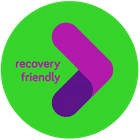Substance use disorder (SUD) is a complex condition characterized by a compulsive pattern of substance abuse despite harmful consequences. It encompasses various addictive substances, including alcohol, illicit drugs, and prescription medications. SUD is a multifaceted issue with profound physiological, psychological, and social implications. Understanding its origins, contributing factors, and the dangers it poses is crucial for promoting effective prevention, intervention, and treatment strategies.
46.3 million people in the United States suffer from substance use disorder, and over 100,000 die of a drug-related overdose yearly. While those numbers are massive, the true cost of substance abuse disorder in lost relationships, physical and emotional degradation, and pain are impossible to calculate.
Substance use disorder occupies a strange place in our society. Some forms, like alcohol abuse, are normalized, and some, like heroin abuse, are stigmatized. Because of this, 94% of people who suffer from the condition never receive treatment. At GateHouse Treatment, we aim to ensure that anyone going through a challenging time with substance abuse gets the help they deserve. This blog will explore substance use disorder, how it begins and worsens, and what can be done to combat it.
What is Substance Use Disorder (SUD)
Substance use disorder is a condition that alters the brain’s structure and function, leading to compulsive substance-seeking behaviors. It is a medical term defined by The Diagnostic and Statistical Manual of Mental Disorders (DSM-5), which outlines 11 criteria for diagnosing SUD. To receive a diagnosis, an individual must meet at least two of the following criteria within 12 months:
- Substance consumption happens in larger amounts or longer than intended.
- A persistent desire or unsuccessful efforts exist to reduce or control substance use.
- There is a significant amount of time spent on obtaining, using, or recovering from the effects of the substance.
- There are cravings or a strong desire to use the substance.
- The addict suffers failures to fulfill major obligations at work, school, or home due to substance abuse.
- Continued substance use causes persistent or recurrent social or interpersonal problems exacerbated by the effects of the substance.
- Important social, occupational, or recreational activities are given up or reduced because of substance use.
- Recurrent substance use in situations where it is physically hazardous.
- Continued substance use, despite the knowledge that the substance worsens an ongoing problem.
- The addict will develop tolerance toward the substance, needing increased amounts to achieve the desired effect or experiencing a diminished effect with continued use of the same amount.
- The addict experiences withdrawal without the substance, with individual substances having different withdrawal symptoms.
The number of criteria that an addict meets determines the severity of SUD:
- Mild: 2-3 criteria
- Moderate: 4-5 criteria
- Severe: 6 or more criteria
What Contributes to Substance Use Disorder?
There are many reasons that individuals can develop a substance abuse issue, encompassing biological, psychological, and environmental elements. It’s important to note that while these factors contribute to the development of SUD, they do not determine an individual’s fate. Each person’s experience with addiction is unique, and addiction therapy should consider this complex interplay. Here are some elements that contribute to SUD:
1. Biological Factors
Addiction can run in families. Genetic predisposition sometimes underlies SUD, as individuals may inherit genetic variations that make them more vulnerable to developing an addiction. Potential contributors to SUD include certain genes related to the brain’s reward system, neurotransmitter functioning, and metabolism of substances. Additionally, neurochemical imbalances, particularly dopamine, associated with pleasure and reward, can influence an individual’s response to substances and reinforce addictive behaviors.
2. Psychological Factors
Co-occurring mental health disorders, such as depression, anxiety, or post-traumatic stress disorder, can increase the risk of substance abuse. People with these conditions may turn to substances as a means of self-medication to alleviate their symptoms temporarily. Additionally, individuals who have experienced trauma or chronic stress may use substances as a coping mechanism, seeking relief or escape from their emotional distress.
3. Environmental Factors:
The environment in which individuals live, and their social interactions can significantly impact the development of SUD. Peer influence is a potent factor, as associating with peers who engage in substance abuse can increase the likelihood of experimenting with and developing an addiction to drugs or alcohol. Family dynamics also play a crucial role. Growing up in a household where substance abuse is prevalent or witnessing parental addiction can contribute to normalizing substance use and increase the risk of developing SUD.
4. Socioeconomic Factors:
Poverty, lack of access to education, employment opportunities, and social support systems can create environments where substance abuse becomes more prevalent. Economic stressors and limited resources may lead individuals to turn to substances as a means of escape or to pass the time.
5. Developmental Factors:
Age and developmental stage are important factors in the development of SUD. Adolescents and young adults are particularly vulnerable due to ongoing brain development. Since their pre-frontal cortex is still developing, they are less likely to think through the consequences of drug abuse fully and more likely to engage in risky behaviors. Regular experimentation with drugs and alcohol during these developmental stages increases the risk of developing SUD later in life.
The Dangers of Substance Use Disorder
Substance abuse can derail one’s life entirely and end it prematurely. The first effects are socioeconomic. As substance use disorder worsens, addicts find it difficult to hold down jobs and maintain relationships. Their emotional volatility and willingness to place drug use above most things hurt and alienate the people they love most.
These issues can lead to or exacerbate mental health issues. Substance abuse often co-occurs with mental health disorders like anxiety and depression, making treatment more challenging. Addicts may suffer from cognitive deficits, memory problems, and diminished decision-making abilities. Finally, there are severe physical health risks. Chronic substance abuse can damage vital organs such as the liver, heart, lungs, and brain. It increases the chances of developing cancer later in life. Sharing needles or engaging in risky behaviors while under the influence can increase the risk of contracting bloodborne infections like HIV and Hepatitis.
Finally, there is the risk of overdose. Opioids, benzodiazepines, cocaine, methamphetamine, and alcohol can all lead to respiratory failure or cardiovascular complications that result in death. There is no upside to drug addiction, and seeking help for yourself or a loved one is important to prevent the worst from happening.
Prevention, Intervention, and Treatment
The first part of combatting SUD is education and awareness. Knowing the risks and consequences of drug use is essential to preventing substance abuse at the outset. For those struggling with addiction, intervention may be necessary.
During an intervention, those closest to the addict speak candidly about how drug use has negatively impacted everyone’s life. The addict is affirmed that they are loved and appreciated but need to make a change or risk losing everything. Drug detoxification, usually the first step in drug treatment, comes after an intervention.
Detox aims to manage withdrawal symptoms and safely transition individuals from intoxication or dependence to a drug-free or stabilized state. It can happen in various settings, including specialized detox centers, hospitals, or sometimes at home under medical supervision. The specific approach to detox depends on the substance, the severity of the addiction, and individual factors.
After the drug has left the system, several therapies can help maintain sobriety. Approaches like cognitive-behavioral therapy (CBT) can address the underlying causes of SUD and support sustained recovery. There is counseling, support groups, ongoing monitoring and checking in, among other forms of therapy that make up the foundation of health. There is also medication-assisted treatment, which under medical supervision, can be used to manage cravings, reduce withdrawal symptoms, and support recovery from specific substance dependencies.
Substance use disorder is a significant public health concern with far-reaching consequences. Addressing it requires a comprehensive and compassionate approach focusing on education, research, and evidence-based interventions to support individuals in their journey toward recovery.
GateHouse Treatment and Substance Use Disorder
No matter what you are going through or how difficult managing addiction has become, GateHouse Treatment can help. We believe in holistic treatment, addressing the underlying causes of addiction and not only treating the symptoms. Our outpatient, intensive outpatient, and partial hospitalization programs provide the therapy necessary to defeat addiction and live healthier lives.
Call (855) 448-3588 or contact our website and make a change today.
- Cymbalta Withdrawal: Causes, Symptoms, And Management - October 12, 2023
- Boredom in Recovery: 5 Tips to Avoid Relapse - October 6, 2023
- Overconfidence and Rehab: Avoiding Relapse - October 4, 2023




